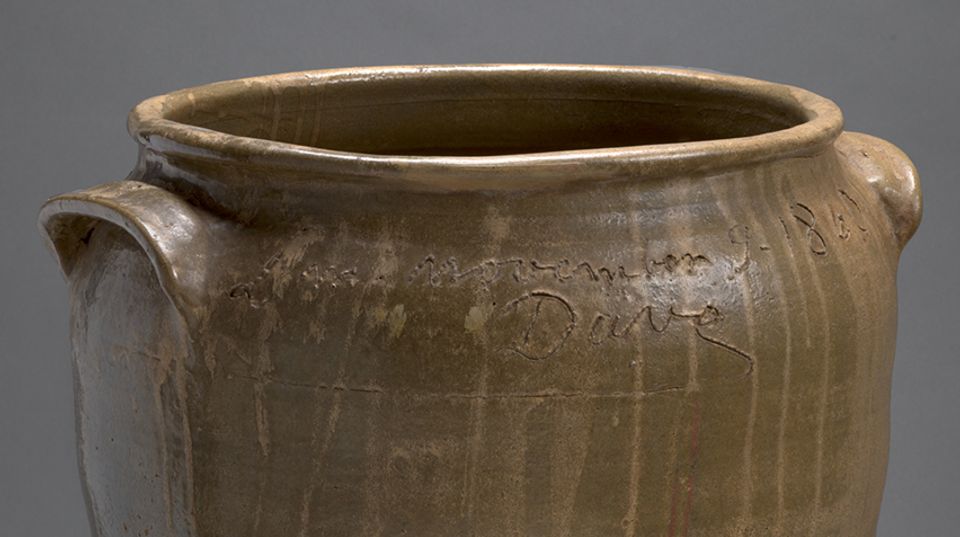Artwork Details
- Title
- Untitled (Verse Jar)
- Artist
- Date
- 1860
- Location
- Dimensions
- 21 3⁄8 × 19 1⁄2 × 18 3⁄8 in. (54.3 × 49.5 × 46.7 cm) footprint: 12 in. (30.5 cm)
- Credit Line
- Gift of Ann and Tom Cousins
- Mediums
- Mediums Description
- stoneware with alkaline glaze
- Classifications
- Subjects
- Object — other — container
- Object — other — container
- Object Number
- 2021.76.1
Artwork Description
Inscription reads:
"A noble Jar for pork or beef
then carry it a round to the indian chief."
"Lm november 9 - 1860
DAVE"
The brown-green hue of this jar, along with its shape, lug handles, and irregular drips, reflect a distinctive alkaline glaze stoneware tradition from nineteenth-century Edgefield, South Carolina. The maker, David "Dave" Drake, was an enslaved craftsman in 1860 when he produced this jar. Drake used wheel throwing and coiling techniques to make vessels of an uncommonly large scale.
The first line of the rhyme on this jar suggests it was used as a container for preserved meats. But the presence of the text itself is as compelling as the poem's intended meaning.
An 1834 South Carolina law prohibited enslaved men and women from learning to read or write. Despite the risk, Drake prominently signed the name "Dave" and inscribed short poems onto the surface of dozens of large storage vessels he made while enslaved in the Edgefield area.
Drake's signature asserts his role in creating this jar and its inscription, but he also calls attention to his bondage by inscribing the initials of his enslaver, Lewis Miles, alongside the date of production.
As enslaved men and women used and admired this massive jar, they would have understood Drake's unmistakable act of defiance. To them and to future generations, he refuted anonymity by making his mark.
Born around 1800, Drake was enslaved for most of his life, as virtually no pathways to freedom existed in South Carolina prior to the Civil War. After gaining his freedom, the artist took the surname Drake.
Related Posts
















